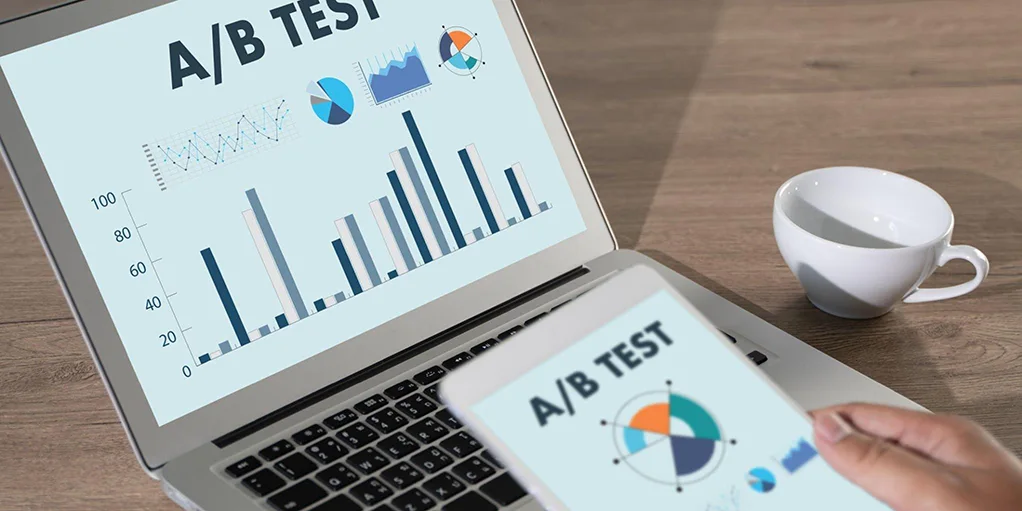In the ever-changing world of digital marketing, maintaining a competitive edge and optimizing the performance of one’s website is of the highest priority. One powerful tool that has gained popularity among marketers is A/B testing. It allows you to experiment with different variations of your website or app and determine which one yields the best results. While traditional A/B testing has proven effective, there’s an even more advanced approach that’s taking the digital marketing world by storm: A/B testing with machine learning. In this blog, we’ll explore how machine learning enhances A/B testing and why it’s becoming the go-to method for optimization.
The Basics of A/B Testing
Before diving into the benefits of A/B testing with machine learning, let’s briefly review the traditional A/B testing process:
- Choose a Variable: Identify an element on your website or app that you want to test, such as a headline, button color, or layout.
- Create Variations: Develop two or more versions of that element, with one being the control (the original) and the others being variations with changes you want to test.
- Random Allocation: Randomly assign visitors to your website or app to one of the variations to ensure unbiased results.
- Collect Data: Monitor user interactions and collect data on how each variation performs. Key metrics may include click-through rates, conversion rates, or revenue generated.
- Analyze Results: Analyze the data to determine which variation performs best. Make informed decisions based on the outcome.
The Power of Machine Learning in A/B Testing
Machine learning adds a layer of sophistication to traditional A/B testing, allowing for more intelligent decision-making and optimization. Here’s how it works:
- Predictive Analytics: Machine learning algorithms can forecast future results of various changes by utilizing user behavior data. This prediction can help you prioritize variations to test.
- Continuous Learning: Machine learning models continuously learn from data, adapting to changing user behavior over time. This means your A/B tests become more effective as the model learns.
- Segmentation: Machine learning can identify specific user segments that respond differently to variations. This allows you to tailor your website or app to different audience groups for maximum impact.
- Personalization: With machine learning, you can personalize user experiences in real time, serving the most effective variation to each individual based on their preferences and behavior.
Benefits of A/B Testing with Machine Learning
- Efficiency: Machine learning can drastically reduce the time needed for A/B testing by predicting outcomes, eliminating the need for prolonged testing periods.
- Accuracy: Machine learning models utilize a high level of precision in the analysis of data, hence reducing the likelihood of making conclusions that are influenced by random fluctuations within the dataset.
- Continuous Improvement: Machine learning models continue to learn and adapt, ensuring that your website or app is continually optimized for the best user experience.
- Personalization: By implementing customized experiences for users, it is possible to enhance their level of engagement and improve conversion rates, leading to an overall rise in business performance.
Case Studies: Success Stories
- Netflix: Netflix utilizes machine learning algorithms to customize the content displayed on its homepage for individual users, leading to enhanced viewing duration and improved customer loyalty.
- Google: Google has implemented machine learning in its search algorithm to deliver more relevant search results, improving user satisfaction.
- Amazon: Amazon’s recommendation engine uses machine learning to suggest products to customers, driving substantial revenue growth.
CONCLUSION
A/B testing with machine learning is revolutionizing how businesses optimize their websites and apps. By harnessing the power of predictive analytics, continuous learning, segmentation, and personalization, you can make data-driven decisions that not only improve user experiences but also drive revenue and growth. As machine learning continues to advance, it’s clear that this approach will become increasingly essential for staying competitive in the digital landscape. So, if you’re looking to supercharge your A/B testing efforts, consider integrating machine learning into your optimization strategy.
To know more about Digital Marketing, Please visit https://paypercampaign.com





